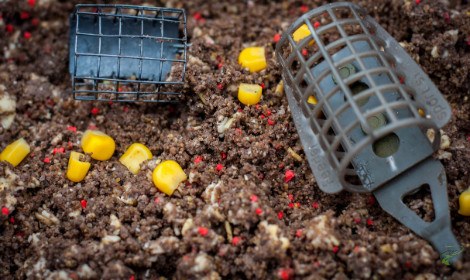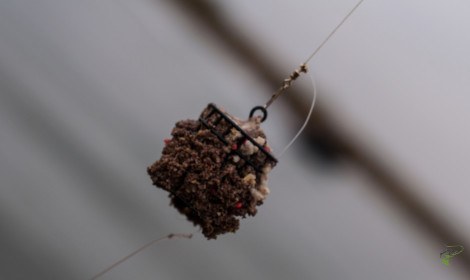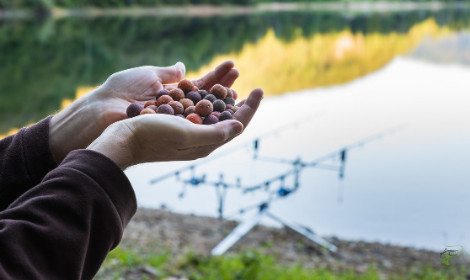
Feeder fishing for carp can be a tricky business for anglers who don’t quite know how it works. Learning the different types of feeders currently available in the market, learning how to load a feeder, choosing the right rod and hook for your feeder, and learning to cast it the right way are some of the things you need to know.
But is it truly a highly complex method, or is it easy once you understand it? It’s the latter, of course! But, like all things in angling, feeder fishing for carp also requires you to understand the reasoning behind it.
After that, it’s all about perfecting your skill with lots and lots of practice. But hey! Who doesn’t want to be out in front of the water all day, practising loading your feeder, casting the line while also enjoying the day?
So, if you’re a person who doesn’t know anything about feeder fishing, you’ve come to the right place because we’ll start right at the beginning. So let’s dive in, then!
What Exactly Is Feeder Fishing?
Feeder fishing is a wonderfully productive way to catch fish in almost all conditions. In this method, anglers use a little device called a feeder and pack groundbait, pellets or other baits. Underneath the packed groundbait (or other bait) would be a small hookbait that the fish swallows.
Once the hookbait pricks the fish, the fish tries to move away, ensuring that the hook pierces the mouth as deeply as possible. This deep piercing happens because of the weight of the feeder bearing down on the hook.
Anglers consider this technique to be efficient and hassle-free. Why is that? Because the feeder neatly transports a big ball of feed to the waterbed to attract hungry carp to your waiting hook bait.
Some of the groundbait mixes on the feeder also disperses to create an attractive bait cloud that the fish’s keen senses bring them towards.
You can pack your feeders with anything from groundbait mix and sweetcorn to pellets and maggots.
Some anglers don’t like feeder fishing because it requires a certain degree of precision on the angler’s part. For example, you need to have the perfect degree of wetness in your groundbait mix, you need to cast the line at precisely the proper distance, and you need to reload it at regular intervals but not overfeed the fish.
These little things tend to be very important to make your feeder fishing venture a success.
Types Of Feeders
Now, on to the significant bit. There are four main types of feeders. Although you might see some others on the market, these four are the ones that anglers primarily use for feeder fishing.
Now, why are there four different types of feeder for one method of catching carp? They all serve different purposes, of course.
So, ready to dive into the different types of feeders? Let’s go.
Method Feeders

These are the most common standard feeders that you’ll see most anglers using. If you talk about feeder-fishing, most anglers will think you’re talking about method feeder fishing. Now, how does it work?
Firstly, it has a flattened body that always lands in the water with the flat end down. This position allows the packed groundbait above to disperse and attract carp to it slowly.
To pack the bait around your method feeder, you should use the mould that comes with it. This mould will help you pack the same quantity of bait every time you reload.
With additions like pre-tied hair rigs, arranging your in-line method feeder has become even easier than before.
Open-Ended Feeder

This type of feeder, as its name indicates, is open from both sides. However, anglers can only use it efficiently with groundbait. Once it hits the bottom of the water, the packed bait will start leaking from both sides of the feeder, drawing carp to it.
It releases its contents slowly into the water. This feeder is a good option for fishing in deeper waters or in spots where it’s harder to attract carp easily.
Maggot Feeder
A maggot feeder looks like a plastic or metal can with small holes scattered around its body. A maggot feeder is excellent for distributing maggots to the waterbed. This action is essential because maggots attract a large variety of fish, including carp.
They also allow you to bait a large area of water over some time so that you can reel in some great catches from all over that area.
Cage Feeder

A cage feeder looks like an open-ended one that can be made out of mesh. This type of feeder is ideal for use in shallow water. Now, why is that? Because the cage feeder rapidly releases the method feeder mix into the water, which allows the angler to fish faster than the method feeder or maggot feeder would allow it to.
However, if you use this feeder in deep or fast-moving water, its mesh outer covering will release all the groundbait into the water before the feeder even reaches the bottom.
Lastly, it is essential to remember that one needs to arrange a rod that compliments the weight of the feeder well. Using a light rod for a heavy feeder can risk bending or failure in reeling in any great catches, and the same goes for using a heavy rod with a light feeder.
How To Fish With Feeders
Now, the process is pretty straightforward. We’ll stick with a basic method feeder fishing style. After feeding the line through the feeder, you need to attach the quick change bead to it. Then attach the pre-tied hair rig to the quick change bead. Once you’re finished setting up your rig, you’ll need to work on the bait itself.
If you want more info on setting up a method feeder rig then take a read at this post.
Firstly, choose a suitable hookbait. From pellets to corn, there’s a wide variety of hookbaits that carp love.
Pack your groundbait or pellet mix on the feeder with the help of a mould. A mould is usually used in the case of method feeders. For other types, you can just use your hands as well.
After that, use a line clip to increase the angle you cast your line at and achieve a greater degree of accuracy regarding the location where you cast your line.
It’s essential to use a quiver-tip rod when using feeders because these vibrate or quiver when there’s a bite which allows you to act quickly and reel the fish in before you lose it.
It’s essential to not leave your feeder in for a long time. Reel it back after 5-15 minutes if you haven’t felt a bite because the packed groundbait has usually dispersed by that time. After retrieving it, load the feeder again and cast it in the same area.
Lastly, don’t fish over a large area. Instead, cast your line in the same area again and again so that you bait that area only. Scattering that bait over a large area will not achieve anything.
Best Hookbaits For Feeder Fishing
Feeder fishing is all about having the perfect rig. As a result, almost all the anglers you’ll see will have their rig set up the same way as yours. Is that a bad thing? Not really. It just means that you need to work twice as hard to ensure that your rig stands out from a sea of similar ones.
One way to do it is by choosing a suitable hookbait. Much like your way of packing the groundbait, hookbaits also can make or break your feeder fishing expedition.
The great thing about carp as a species is that it is an aggressive feeder. This quality means that it usually doesn’t discriminate between foods when it wants to feed. However, like all living things, it also has some preferences that we need to discuss. What are they? Let’s see.
Boilies

Boilies are a great addition to the hookbaits family. Since they’re created artificially to attract fish specifically, boilies tend to be a melting pot of all the food groups that carp tend to love.
When carp smell boilies, there’s absolutely nothing that can stop them from biting on the hookbait then and there.
Pellets

If you thought you could only use pellets to pack your bait, you’re pretty wrong. You can also use larger pellets as hookbaits. These hookbaits dissolve more quickly in the water as compared to boilies. This quick dissolution helps carp track the food.
Sweetcorn

Well, this one for all those people who swear by corn as bait. They’re pretty suitable. This type of hookbait is fantastic for attracting carp and some other varieties of fish as well.
Its vibrant colour is another reason why it works so well as a hookbait.
In any case, you can always use other hookbaits, too, if the need ever arises as carp respond to almost all the hookbaits with enthusiasm. Moreover, this massive variety of hookbaits save you from worrying about getting the right kind.
Artificial Casters
These hookbaits work as well for carp as they do for tench. In addition, these artificial baits come in a variety of colours so that you can switch up your strategy according to the weather, the water clarity and the season.
Feeder Fishing Tips
Some anglers will expertly throw their line into the water and retrieve it a minute later with a wriggling fish on the other end. If you want to become such an expert too, there are some tips you can follow to become a success in this arena.
If the water is clear, use a fluorocarbon line, so the carp don’t get scared away.
Use a braided line to fish over large distances so you can easily detect a line. In addition, braided lines have less elasticity than fluorocarbon ones which helps to transmit the bite easily.
Make sure that you use colourful hookbaits when fishing in the summer. For winter, paler hookbaits work best.
Never overfeed any fish in a particular area. Overfeeding means that the fish will satisfy their hunger which reduces the chance of them finding your hookbait.
Always have some markers to remember where you last cast your line. These markers can be some rocks, trees or buildings.
If you’re not getting any responses, try changing your hook bait. Very often, a significant change in the number of bites happens after a change of hookbait.
If you’re unsure about what to pack your bait with, use both groundbait and micropellets.
Take some spare feeders with you. Because anglers cast feeders in far off directions, many caught in trees and underwater vegetation and get lost.
It’s a sensible idea to use a broad-mouth hook with feeders. However, one should keep the average size of the carp in a particular place in mind when choosing the hook size. Make sure you choose small hooks for small carp and big hooks for larger specimens.
If you want to make your feeder attractive, spray some flavour on it. You’ll have carp swarming on it in no time.
Reload quickly. There’s no need to sit around for half the day waiting to get a bite on the feeder. Make sure to reload after a maximum of fifteen minutes.
Find a good spot to cast. You can usually find carp near the margins, under the shadow of overhanging branches, etc.
As you can see, you can learn a whole gold mine of information about feeder fishing. The reason behind this is that it’s such a vastly successful method of fishing. But if you want to learn more tips and tricks, you should go out on the water yourself and find out what makes the carp tick!
That’s All
So, I hope feeder fishing for carp has become a little clearer to you. After all, feeder fishing is an essential part of a coarse angler’s skills.
If you’ve learned what feeder fishing is and what hookbaits to use with this article, your next step should be to learn how to fish with a method feeder and adequately set up your rig.
After that, pick up a feeder of your choice from your nearest tackle shop and get to work!

